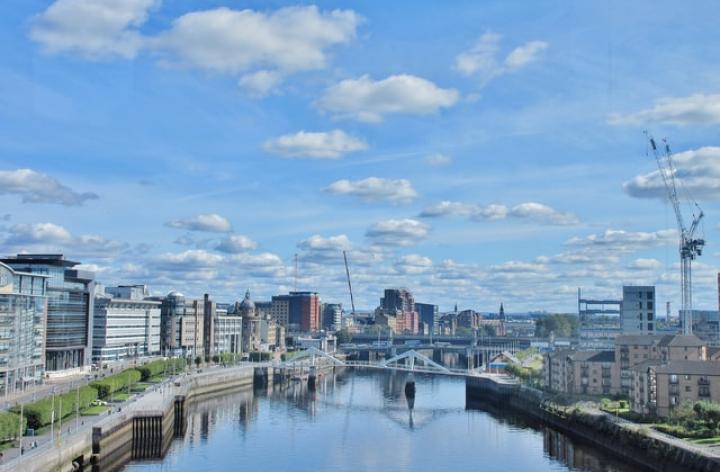
As we finish another year punctuated by the pandemic, one thing remains clear. Coronavirus continues to be the biggest driver of change in Scottish real estate. Yes, climate change is having an influence as is ESG, but the pandemic has had the largest impact on our day-to-day life, inevitably creating a knock-on effect on property.

A continued focus on making offices work better
One of the more direct impacts of coronavirus is on our office spaces. In 2021, employers invested in making their offices more enticing places to work. One viral example from LinkedIn was when KPMG in Norway went so far as to enable employees to alter their set-up in the office so that they could, ironically, feel more at home. Office workers will likely continue to want to work from home this year, so employers will need to continue to make their offices worth commuting to.
A good example of a business doing this well closer to home is Thomas and Adamson, who relocated their Edinburgh offices in 2021 to Quartermile and at the same time took the opportunity to rethink the use of their space. The result is a much more welcoming front of office - the coffee machine and wine fridge help - with plenty of "touch down" working space and areas designed to facilitate collaboration rather than rows of sterile workstations.
In addition to where people choose to do their work, property will increasingly impact who people choose to work for. The building a person works in is likely to drive choices and change for two main reasons: it can create a positive or negative working environment and it can be a building that either has a positive or a negative effect on the planet.
HFD's office development at 177 Bothwell Street in Glasgow is a wonderful recent example of an office building that bridges employee wellbeing and environmental commitment. Amongst its many highlights are a rooftop running track to support employee health, while all the building's energy comes from an identified, local wind farm.
Leading on quality will reap rewards in a buoyant PBSA sector
At the higher end of the market in purpose built student accommodation (PBSA), where rental levels are less of an issue, the huge drive over the last decade has been about delivering an enhanced living experience.
The PBSA market is so driven by quality these days, that buildings that are not of the highest quality or operational standards will see drops in occupancy levels, rents, or both. The PBSAs with good investment in the building and operational excellence will thrive.
We have seen in 2021 how resilient the PBSA market has been, even in the grip of full-blown lockdowns. It remains a very attractive asset class at the right level, and anecdotally there is some serious money looking to snap up student accommodation portfolios, particularly those that are underperforming and need investment.
While many predicted that there would be significant investment activity in newbuild PBSA portfolios at the end of 2021, now anticipated for Q1 or Q2 of this year, I think the more likely trend will be investment in tired and outdated stock. Particularly older university owned buildings, which could, with the help of private sector developers, be refocused to target the mid-to-high end of the market where demand currently outstrips supply.
The residential renaissance?
Whilst on the topic of living, the residential market has been on the crest of a wave in 2021. A supply and demand imbalance coupled with political will for more homes has led to tremendous activity across all areas, from housebuilding to build-to-rent.
For a long time, the commercial residential market has led the way on sustainability. Zero carbon, sustainable construction and lower energy costs combine to sell houses, even if the costs of achieving these ideals aren’t always capable of being passed down from housebuilders to homeowners.
With more time spent at home during the pandemic, most people have taken a closer look at what “home” is like, or how it could be improved. Continued homeworking has made people less inclined to pay high premiums for the more fashionable postcodes.
Greater investment in high quality, experiential leisure and retail spaces
I was lucky enough to experience a tour of Diageo's new Johnnie Walker visitor experience in Edinburgh on Princes Street last month, and fantastic though it was it felt even more of a treat because of having been locked down for so long.
This experience, which caught the eye of many locals and visitors to Edinburgh last year, is indicative of what I expect will be a more lasting trend: retail and leisure spaces need to provide people with rewarding experiences. Those spaces that are designed to provide a heightened customer experience, coupled with good service, will thrive.
First published in Property Week.
The content of this webpage is for information only and is not intended to be construed as legal advice and should not be treated as a substitute for specific advice. Morton Fraser LLP accepts no responsibility for the content of any third party website to which this webpage refers. Morton Fraser LLP is authorised and regulated by the Financial Conduct Authority.









